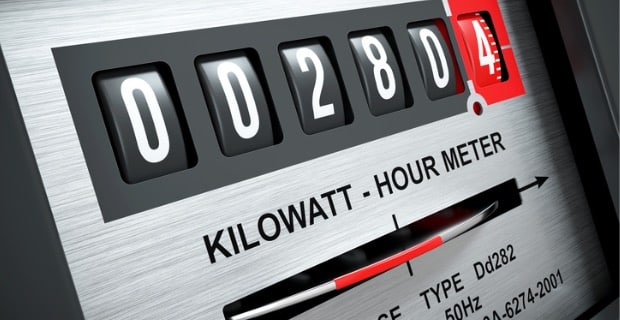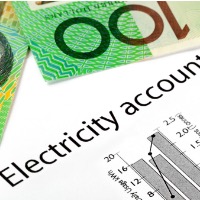best solar power efficiency.We all know them. The neighbour who got solar years ago and is still dining out on hefty feed-in tariffs (FiT) and getting solar rebates. But the truth is, those early adopters paved the way for the more efficient, cheaper solar panels that we have today, so even with solar feed-in tariff changes, you can still come out ahead.
With the solar boom, however, many Australians are worried about feed-in tariff changes with the rates decreasing. Will governments in coming years decide to lower the FiTs, or remove them altogether for those who waited too long to install their solar systems?
In this article, Energy Matters unpacks those fluctuating FiTs, offers advice to homeowners and small businesses on getting the best deal, and brings you information on rates from around Australia.

Are feed-in-tariffs a victim of their own success?
For those new to solar energy, feed-in-tariffs are payments for putting electricity back into the grid from your rooftop solar panels. Australians fitted a record 3.5 million panels last year, which sounds great, but the problem is governments now don’t see the need to subsidise solar because it’s doing so well.
The original idea of the tariffs was to encourage more people to take up renewable energy. Now, lots of states have hit their renewable targets.
So what to do? If feed-in tariff changes mean your rate is plunging, you might want to think about using the power you generate better.
Self-consumption is the key: use as much solar as possible in your own home. Make sure you run devices when the sun is shining. Set times to use dishwashers or washing machines during the day, when solar is available. Install a battery and review your energy plan. Use smart meters to get the best solar power efficiency.

The solar states of Australia
However, really capitalising on solar power depends on where you live. Each state and territory sets its own FiT regulations. Then the electricity retailers in most states have the freedom to offer tariffs higher than the regulated rate.
Let’s look at the rates state by state.
- Qld 7c-16c/kWh
- VIC 10c- 16c/kWh
- SA 7c -16.3c/kWh
- TAS 8.9c/kWh
- ACT 9c-11c/kWh
- NSW 11.6c/kWh
- WA 7.135c/kWh or 10-50c/kWh
- NT 26.88c/kWh
There’s more information in this Energy Matters guide. But bear in mind these rates do change so check your retailer.
Big solar feed-in tariff changes ahead in Victoria
For residents of Victoria, there’s a shake-up with feed-in tariff changes coming in July 2018. As recently reported in Energy Matters, solar customers in Victoria could get as much as 29 c/kWh at peak times of the week. That’s because two FiTs will be set: time-varying and single rates.
The rates will be set as follows:
- Off-peak – 7.2 cents per kWh (c/kWh). Times: 10pm to 7am on weekdays and weekends.
- Shoulder – 10.3 c/kWh. Times: 7am-3pm and 9pm-10pm weekdays, and 7am-10pm weekends.
- Peak – 29 c/kWh. Times: 3pm-9pm weekdays only.
However, retailers can for one year offer an alternative FiT option: a single-rate minimum of 9.9 c/kWh, which will not change throughout the 24-hour period.
Does the number of solar panels alter the FiT?
As explained, solar systems are coming down in price all the time so this will compensate for a lower FiT. But a larger system that produces more power than you will use will give you some backup power as well as some to feed back to the grid for those FiT rewards.
Some things to think about are whether the solar installer is a Clean Energy Council approved solar retailer. Will they be available to troubleshoot and fix problems? Who organises the necessary metering changes and what are the associated costs? How long has the product manufacturer or importer been in the PV industry?
Check out this information about solar quotes so you can get the best deal for the size of your home.
Ask the solar professionals
To conclude, governments across the world have been using FiTs to promote energy use over the last couple of decades and it has generally worked.
Germany has reached its 38.4 gigawatts of solar capacity target. Demand in China for solar energy is growing. The country added 15 gigawatts of solar in 2015. Japan has some creative options, such as the new floating solar panels.
Even in the United Kingdom, not exactly known for its sunny climate, FiTs were introduced in 2010 and the rate now is 3.93p/kWh.
However, the Indian government is planning to organise an increasing number of reverse auctions for wind energy projects. As reported in CleanTechnica, several states are rethinking whether to continue with the feed-in tariffs at all. Karnataka has become the latest state to ask its power utilities not to sign any new power purchase agreements with wind energy developers at feed-in tariffs.
In Australia our FiTs may not be as high as they used to be. But solar has plunged in price since the early days and is now more efficient too.
When you are asking for solar quotes, ask the installer about the size of the solar panels you need and how best to benefit from your state’s tariff. Also, think of using smart meters and using your energy in the day when the sun is out. With a bit of smart thinking and the right advice, your solar power system will soon become an asset to your home, as well as an energy saver.







































